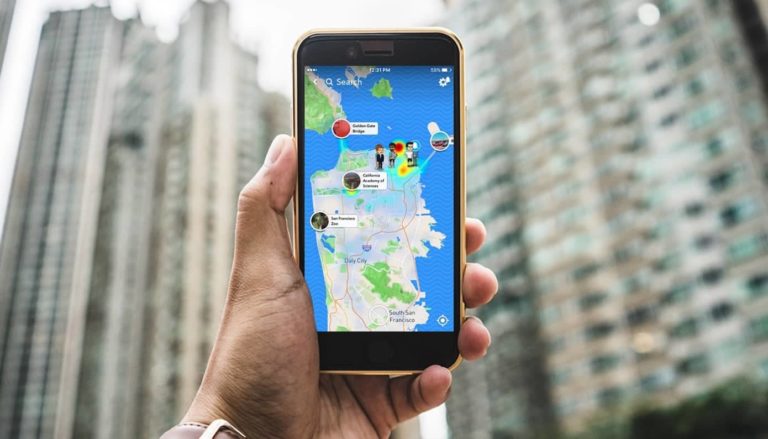
Snapchat continues to signal interest in being a socially-fueled local discovery engine. This goes back to its early work in Geofilters, Snap Map and, more recently, Local Lenses. The thought is that social activity can be a trigger for local behavior like meeting friends for a drink.
Snap’s latest move is My Places. A feature of Snap Map, it brings more structure to local discovery by positioning 30 million local businesses with more formal interactivity in the mapping UX. For example, 250 million Snap Map users can tag, share and check into local spots.
The timing could be right, as the world returns to physical activity (albeit touch & go). Snap wants to compete with Google Maps as a local search and discovery engine. And it could have an edge given a Gen-Z heavy audience, as well as socially-informed content and user interactions.
Moreover, all of the above aligns with parallel moves Snap is making in AR. In fact, Snap is a major contender in AR’s “Space Race” to augment the physical world in geo-relevant ways. Advancements to Snap Map feed into that effort including geospatial data for AR interactions.
The AR Space Race, Part IV: Snap
Organizational Framework
Before getting into the AR-specific angle, what’s My Places all about? It lets users categorize their favorite local spots. A “Visited” tab lists places they’ve checked into; “Favorites” lets users specify places. And “Popular” is a discovery engine that algorithmically suggests places.
The latter is potentially most interesting, as it further differentiates Snap Map from Google Maps. The signals it uses to make intelligent recommendations include a user’s current location, past check-ins or “favorited” spots, and how all these signals flow from one’s friends’ on Snapchat.
My Places also follows Snapchat’s May Layers launch. This organizational framework lets users toggle between thematically grouped events and entities. For example, an “entertainment” layer unearths data from Ticketmaster. More layers will develop around food, fun, etc.
My Places meanwhile has implications for Snap’s Local Place Promote. This is Snap Map’s monetization engine that lets local businesses pay to have greater exposure within the Snap Map UX. It includes expanded business profiles and targeted advertising within Snap Map.
My Places could amplify Local Place Promote by driving more user engagement in Snap Map that causes SMBs to see it as a strong source of foot traffic. Structured data from My Places could also provide content for businesses profiles, or the chance to interact directly with users.
Snapchat Raises its Location Game
Orbiting Efforts
Back to AR, My Places has potential integrations with Snap’s multi-sided geolocal lens play. AR continues to drive Snap’s revenue growth through lenses and visual search (Snap Scan). So it’s doubling down and integrating it in several places, including geolocal products.
For example, Local Lenses are the geolocal version of its signature lenses. They utilize the rear-facing camera to augment the broader canvas of the physical world. That thinking leads to a larger addressable market of lens-based advertisers, beyond products that can go on one’s face.
My Places could support Local Lenses as a location database to power geo-relevant experiences. In other words, local businesses can be identified and annotated in similar ways as Local Lenses’ more whimsical use cases, such as creating and discovering virtual street art.
This would make My Places a sort of crowdsourced data pool to join Snap’s other developing spatial-mapping sources, such as its Pixel8.earth acquisition. The point is that all of these orbiting efforts in Snap’s geolocal play are interrelated and trace back to its larger AR master plan.
We’ll see versions of this location data dynamic for others, including Google’s Street-View informed Live View and Foursquare’s geolocal data-driven audio AR. Place data, along with spatial maps, device capability and other moving parts, will be a key pillar of the AR cloud.

